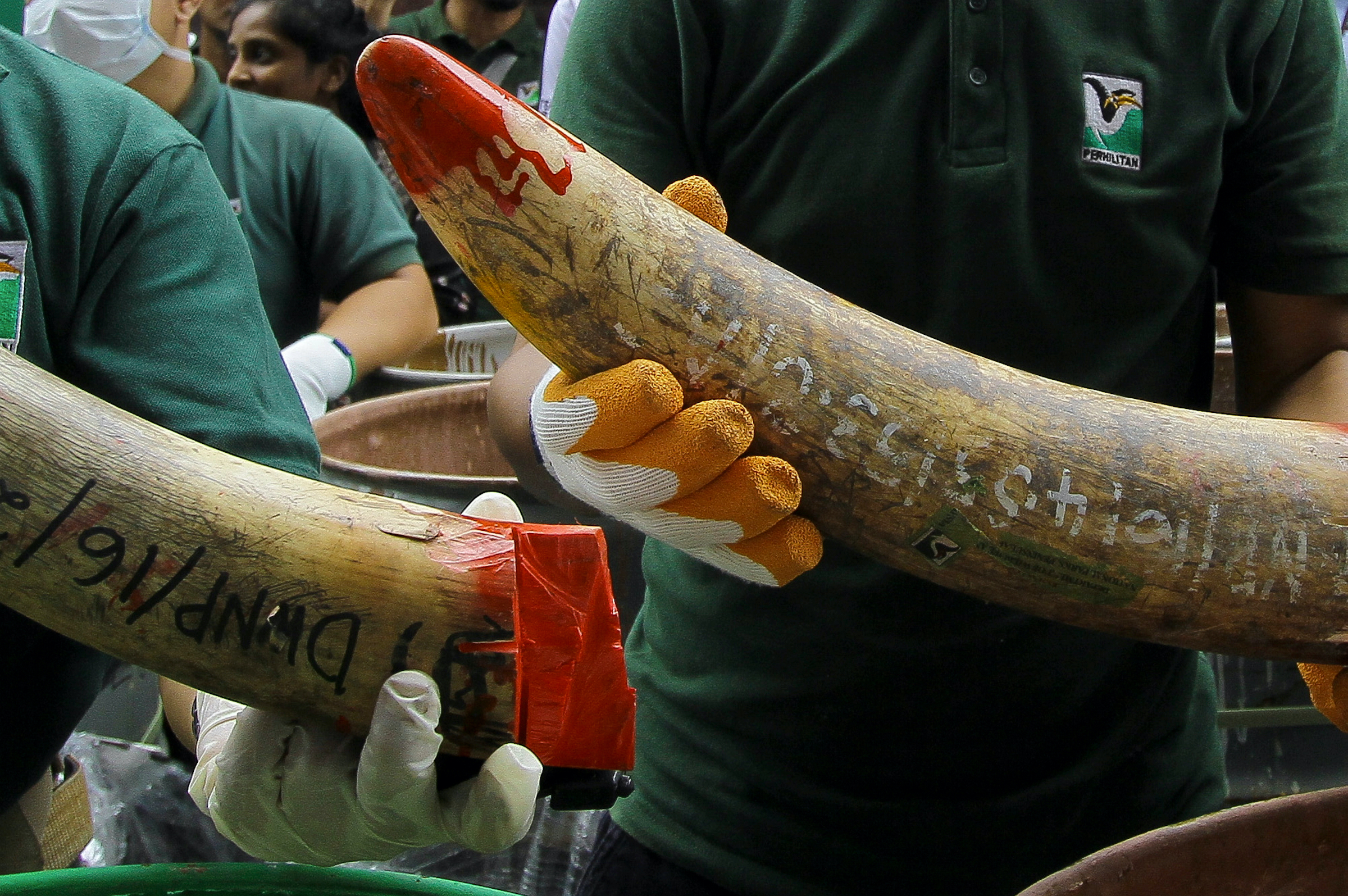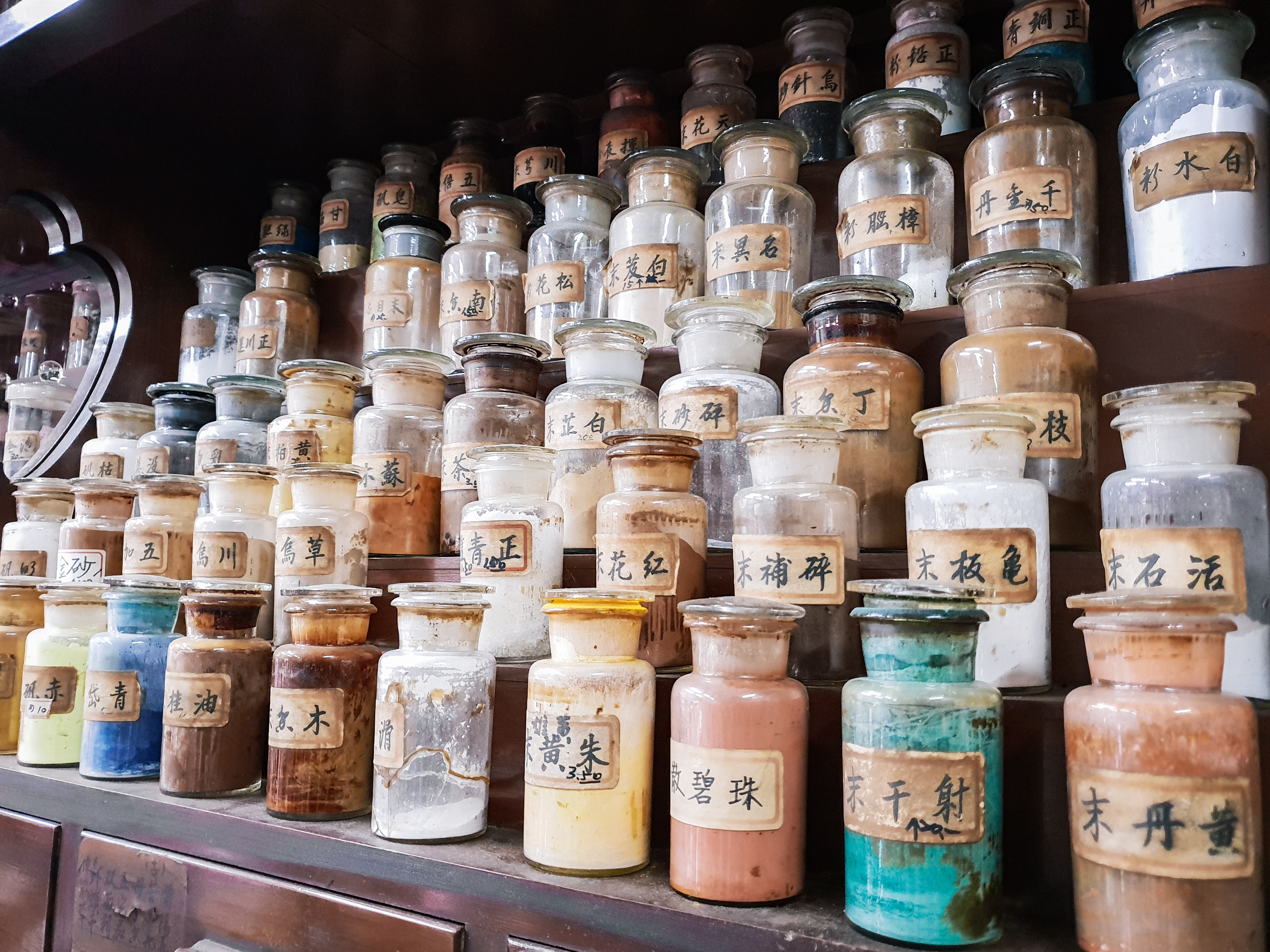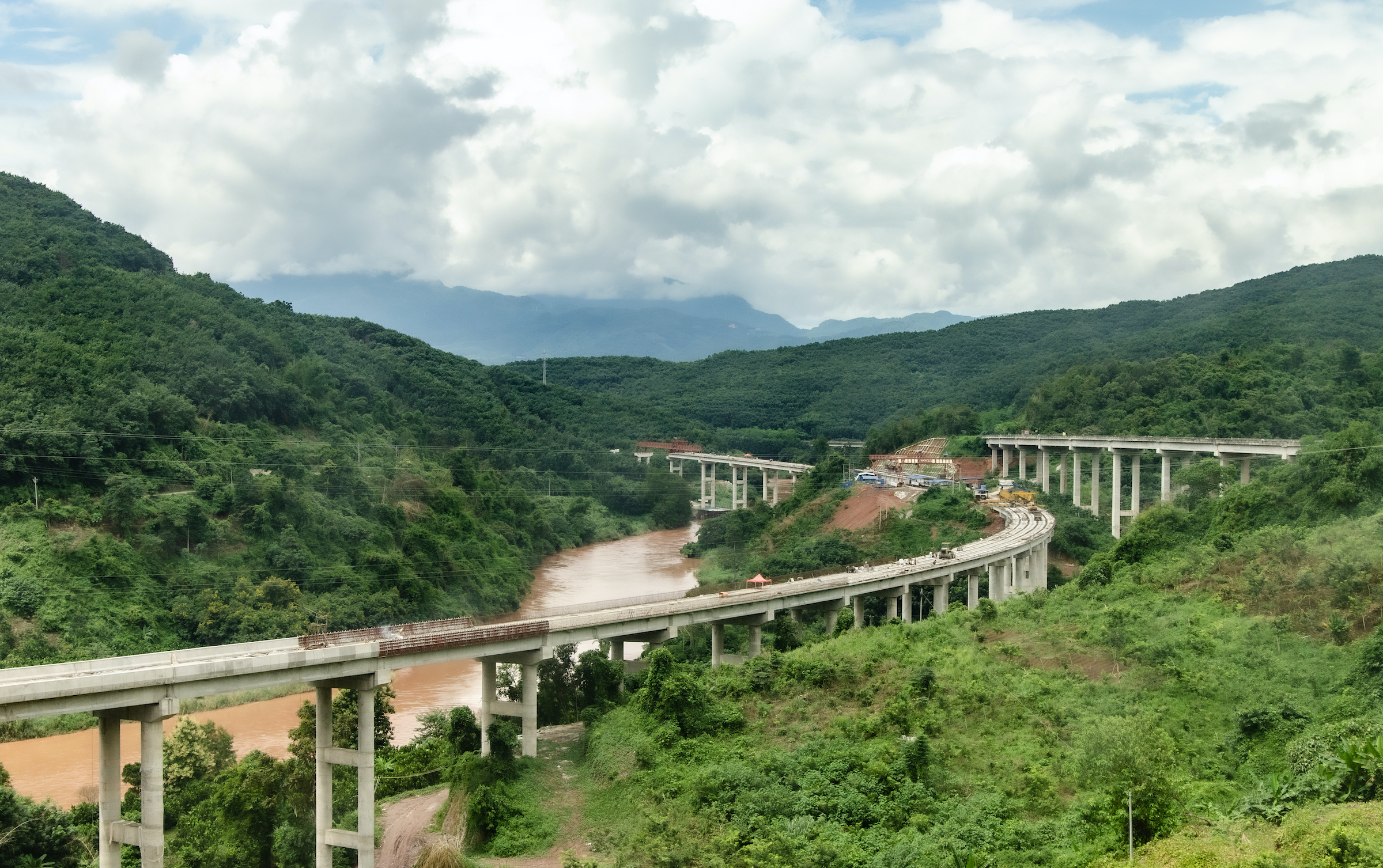When we think about the size and value of the illegal wildlife trade, it’s important to acknowledge that we just don’t know, and nobody knows. There are lots of guesses out there on the value of wildlife trade. If you look in scientific literature or the media even, people will say the wildlife trade is worth billions of dollars per year. Estimates go all the way up to 23 or 25 billion dollars per year. The problem with these estimates is that often they’re not based on any evidence. That’s because it’s just so difficult to study wildlife trade. It depends on your definition. First of all, it depends on how you count the value and size of the wildlife trade, whether you consider it being sold along the supply chain or the final sales value. It’s interesting to think about that and why we need to quantify the wildlife trade, because it helps to sell the issue to policymakers if we can say that this is something that’s valuable and large-scale. The problem is, we know that it’s valuable and large-scale, but we just don’t know how much it’s worth. It’s not something that is possible to consider because we don’t know all of the different species and trade. We don’t know how they are being traded, and often it’s so incredibly covert that we don’t know what’s happening in different places in the world.
Amy Hinsley
Understanding the scale of the illegal wildlife trade and how to stop it
Amy Hinsley, Senior Research Fellow at the University of Oxford, explains the illegal wildlife trade, its scale, demand, and how she investigates it.Key Points
- • There is a diverse range of motives for different actors in illegal wildlife trade chains and understanding each one is key to breaking it.
- • Habitat conversion is one of the biggest threats to wildlife and an indirect facilitator of illegal trade.
- • There is no one overarching international agreement on illegal trade, so measures need to be built into policy decisions from the start.
Diverse motives for participating
When we think about the size and value of the illegal wildlife trade, it’s important to acknowledge that we just don’t know, and nobody knows. There are lots of guesses out there on the value of wildlife trade. If you look in scientific literature or the media even, people will say the wildlife trade is worth billions of dollars per year. Estimates go all the way up to 23 or 25 billion dollars per year. The problem with these estimates is that often they’re not based on any evidence. That’s because it’s just so difficult to study wildlife trade. It depends on your definition. First of all, it depends on how you count the value and size of the wildlife trade, whether you consider it being sold along the supply chain or the final sales value. It’s interesting to think about that and why we need to quantify the wildlife trade, because it helps to sell the issue to policymakers if we can say that this is something that’s valuable and large-scale. The problem is, we know that it’s valuable and large-scale, but we just don’t know how much it’s worth. It’s not something that is possible to consider because we don’t know all of the different species and trade. We don’t know how they are being traded, and often it’s so incredibly covert that we don’t know what’s happening in different places in the world.
Estimates not based on evidence

Photo by MIFAS
Who are the stakeholders?
Because of the complexity of the wildlife trade, it doesn’t matter which species you’re looking at. What you need to consider is who is involved, who are the key stakeholders, who are the key actors in that supply chain. You need to decide how you need to go about understanding their motivations and their behaviour. So my work tends to focus on the consumers and the traders. The best way to study them in something that’s covert and hidden is to study the legal trade and to try to infer more information about the illegal trade. For example, I’ve done lots of work on online trade. People will openly sell illegal wildlife products on places like Facebook, social media websites and just on the internet broadly. That’s often because they feel that no one will be checking up on them, that there won’t be any consequences. That’s a good way of getting a window into what’s being sold.
A window into an illegal world
Another way is to speak to the consumers and ask them why they buy things, whether they’ve seen products for sale and whether they’ve bought illegal products. Often they won’t tell you the truth, but you can use different methods to try to improve anonymity when asking these questions, so that people feel protected and can actually answer. By doing that, by getting an understanding of the behaviour of consumers and what it is that they’re looking for in a product, you can infer a bit more about the drivers of the wildlife trade. You can look into more about whether people will be buying sustainable products instead of illegal products and how those two markets might interact with each other. You can understand more about policy decisions and how policy changes might influence consumer behaviour. All of these things mean that you can get a window into this kind of illegal and very difficult-to-study world.
Triangulating data from different areas
To study the wildlife trade, you need to be incredibly interdisciplinary. You need to think like an economist. You need to have this understanding of human behaviour. You need to study different aspects of things. You need to understand why policy makers might have set a certain trade ban, for example. You need to understand how consumers value different products. You need to think about why a consumer of traditional medicine might be using the product. It might be because they like it, because it’s the cheapest product out there, but it could also be something like their grandmother used it; it’s a very traditional thing, and it’s part of their identity to use that product. So you need to use all of these different methods. It’s not always about going to illegal wildlife trade markets and spying on what’s happening. In fact, ethically, we obviously as academics can’t do things like that. However, what is interesting is triangulating data from lots of different areas: so, bringing in consumer behaviour data, bringing in consumer perceptions of different products, looking at official trade data from the legal wildlife trade, looking at seizure data from the illegal wildlife trade and using all of these different pieces of information to try and form this picture of what the wildlife and illegal wildlife trade is, how it’s changing and how it might be threatening different species.
Hidden wildlife-based ingredients

Photo by berry21477
As consumers, the most important thing is to just be aware of what you’re using. In many countries, you might be quite distant from the illegal trade. You might not be consuming a product, a medicinal product, that might have wild orchids or wild plants in it, or wild animal extracts even, but we all need to consider as consumers what we’re using. For example, there are lots of different wildlife-based ingredients in everything that we use, even ones that we don’t see. So in many medicines and vaccines, you can get additives that are taken from wild sharks, and there’s no captive-bred alternative for that. It’s all taken from wild sharks. In different countries, you might buy products that contain wild plant extracts that have been taken illegally from the wild. Often, as consumers, we might not know that.
Be aware of products we are using
Some of my work in China has been looking at the trade in bear bile as a medicinal product, and I found that the most striking result was that most consumers just didn’t know what they were consuming; they didn’t realise that bear bile was in medicinal products. They didn’t know whether they’d ever used it. Some of that is because they would go to their doctor or their pharmacist, who would just prescribe them a product, and they don’t ask what’s in it. They don’t care what’s in it. They only care whether it’s going to work to treat them or not. So one thing that we can all do is just be a bit more aware of the products that we’re using and where they might come from, even apart from traditional medicines and the ones that people tend to think of when they think of wildlife-based products. There are other examples that we all might use every day. For example, Brazil nuts are all taken from wild trees. You can’t cultivate a Brazil nut tree. So every time we might eat Brazil nuts in any product at all, they’re coming from the wild, and that’s legal trade; however, it doesn’t necessarily always mean it’s sustainable trade. So just being more aware as consumers is the best that we can do. I’m putting pressure on companies and other trade actors when we know that something is illegal and unsustainable to change their ways, because often there are alternatives available.
Threats from habitat conversion
One of the biggest threats to wildlife, probably to all species, is habitat conversion. These big infrastructure projects that are taking place globally, any kind of conversion from wild habitats, is a big threat to biodiversity. One example that I’ve worked on quite a lot is the Chinese Belt and Road Initiative, sometimes called the New Silk Road. This is a huge infrastructure project, one of the biggest in living memory. These roads, rail links and shipping lanes that are being developed, linking China to the world, essentially – there are more than 80 countries currently either signed up officially or showing interest – pose a potential threat to wild habitats and biodiversity. One of the potential threats from this is opening up new routes for wildlife traffickers to use, facilitating illegal trade by opening up a new road through a rainforest that has never had a road through it before. By doing that, you expose lots of species to illegal trade because now people can access them more easily. They can go in and they can cut down trees; they can take animals from the forest and easily transport them to big consumer markets. These threats alongside that habitat conversion from the infrastructure developments can put a lot of extra pressure on different species.
Risks and opportunities together
One thing that I’m interested in is not just looking at this as a risk, but looking at risks and opportunities together: trying to understand what the risks are, where we should potentially not be converting habitat, where we should not be promoting trade in different species, but also looking at the opportunities, because sustainable trade in, for example, medicinal plants can bring lots of benefits to often poor rural people who don’t have any other livelihood options. One thing I’m interested in is the spread of traditional Chinese medicine among the Belt and Road Initiative. This is something that China is promoting in lots and lots of different Belt and Road Initiative countries. For example, in Nepal, they are trying to build the traditional Chinese medicine industry in these countries, and there are examples in places like Nepal where there are medicinal plants that are not threatened that could represent a sustainable option for wildlife trade. So I think what’s interesting about this, and what we need to be doing, is to be thinking about those risks and opportunities and how to minimise risks and promote opportunities, try and find a way that we can balance these big projects (that are probably going to go ahead anyway) with the needs of people and biodiversity.
Sustainability from the start

Photo by Jo Raphael
For these big infrastructure projects, often the key is trying to build sustainability from the start, and in any of these big geopolitical issues, it’s trying to get countries together and agree on what the best way of promoting sustainability is. Often there isn’t one international agreement that might cover these things but lots of different international agreements. For example, for wildlife trade, the Convention on International Trade in Endangered Species of Wild Fauna and Flora, or CITES, is the main international agreement that covers the wildlife trade. Its main point is to promote legal, sustainable trade and to monitor species that might become threatened by trade. CITES is useful because it will control things like movement of different species between different countries. It will ensure that people don’t get permits if they don’t comply with CITES rules, which can happen. In terms of the kind of broader agreements that might cover things like infrastructure development, it is making sure that governments involved are building sustainability from the start. So, if you’re trying to build traditional medicine markets around the world, it means having a consideration in there of sustainable sourcing so that it’s not just ignored, because often it’s not a case of having bad practice on purpose. It’s sometimes the especially large companies or policymakers that are focused on things like trade. They just might not consider sustainability as an issue, and so bringing that to the attention of policymakers and consumers as well, because then there can be more pressure put on that supply chain to try and become more sustainable.
Discover more about
The illegal wildlife trade and wildlife sustainability
‘t Sas-Rolfes, M., Challender, D. W., Hinsley, A., Veríssimo, D., & Milner-Gulland, E. J. (2019). Illegal wildlife trade: scale, processes, and governance. Annual Review of Environment and Resources, 44, 201–228.
Hinsley, A., & Ming Lee, T. (2019). Building sustainability into the Belt and Road Initiative’s Traditional Chinese Medicine Trade. Springer Nature Sustainability Community.
About Amy Hinsley
Discover more EXPs
Here's how we use cookies
To give you the best experience, we tailor our site to show the most relevant content and bring helpful offers to you.
You can update your preferences at any time, at the bottom of any page. Learn more about how your data is used in our cookie policy.